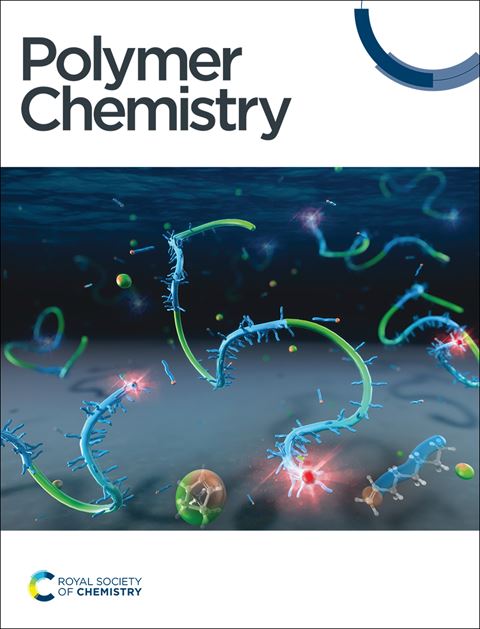Preparation of phenyl-substituted open-cage silsesquioxane-pendant polysiloxanes and their thermal and optical properties†
IF 4.1
2区 化学
Q2 POLYMER SCIENCE
引用次数: 0
Abstract
We prepared phenyl-substituted corner-opened type polyhedral oligomeric silsesquioxanes (CO-POSSs) bearing tris(dimethoxysilyl)-groups with variable linker lengths at the opening vertex; that is, tris(dimethoxysilyl-ethyl-dimethylsiloxy)- and tris(dimethoxysilyl-propylthioethyl-dimethylsiloxy)-heptaphenyl-substituted CO-POSSs ( and ). Optically transparent free-standing films of phenyl-substituted open-cage silsesquioxane-pendant polysiloxanes () were prepared by optimizing the sol–gel reaction conditions for . Polycondensation of afforded an optically transparent and flexible phenyl-substituted CO-POSS-pendant polysiloxane film (). The polycondensations of and were fully completed even at 50 °C for 6 h under vacuum. 29Si cross-polarization magic angle spinning (CP-MAS) NMR analysis suggests that the films included cyclotrisiloxane (D3) and linear siloxane (Dlinear) structures. The effects of the polysiloxane structures on the thermal and mechanical properties were studied. The highest temperature at which the sample lost 5 wt% of the original mass (Td5) under N2 (381 °C) was obtained for , even though it contained a flexible linker unit. The predominant linear siloxane structures may provide increase higher thermal stability. The UV-vis spectra of the resulting transparent films were mostly unchanged even after six days of exposure to UV irradiation in air. The present study shows that phenyl-substituted CO-POSS-pendant polysiloxanes represent alternative UV-resistant, optically transparent materials with higher heat resistance.

求助全文
约1分钟内获得全文
求助全文
来源期刊

Polymer Chemistry
POLYMER SCIENCE-
CiteScore
8.60
自引率
8.70%
发文量
535
审稿时长
1.7 months
期刊介绍:
Polymer Chemistry welcomes submissions in all areas of polymer science that have a strong focus on macromolecular chemistry. Manuscripts may cover a broad range of fields, yet no direct application focus is required.
 求助内容:
求助内容: 应助结果提醒方式:
应助结果提醒方式:


